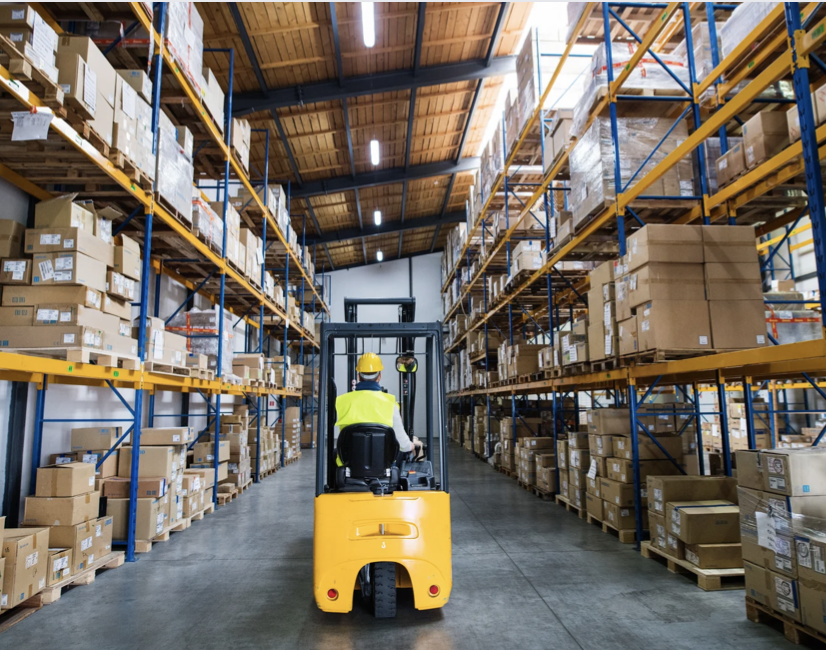This article is part of an ongoing series on the uses for artificial intelligence (AI) in manufacturing, starting with our article introducing machine learning and AI, and their relevance to manufacturing and supply chain operations.Â
Today’s entry in our Machine Learning for Manufacturers series will focus on a part, or should we say place, in the supply chain operations that is not always the main focus of manufacturing talk: The warehouse. Normally the factory is the focus, where the products are created, but the warehouse, where they are packaged, stored, and loaded for shipping, is just as important. Read on to learn about the role AI can play in the warehouse.Â
Where the Warehouse Matters
In manufacturing, a lot of attention is paid to what happens on the factory floor, where the materials are produced. It is assumed that the success of the manufacturer largely depends on the operations within the factory.Â
While that is true up to a point, a link in the supply chain that often gets overlooked is the warehouse, where the goods are stored and organized before being transported to the customer.Â
Even transportation overshadows the warehouse for many manufacturers, which is unfortunate, because overlooking the warehouse can result in unnecessary costs.Â
One aspect of warehouse management that could benefit from scrutiny is slotting, which is the process of organizing and categorizing the many items to store within the warehouse.Â
You do not need to leave warehouse operations such as slotting up to human labor, however, as you can save on human labor and time costs by implementing an AI solution into the supply chain.Â
Artificial intelligence has more uses in the warehouse than just slotting. To find out more, read on.Â
Automation in the Warehouse
Since we brought it up, let us start this discussion with an exploration of how AI can help with slotting.Â
AI can analyze a warehouse’s unique layout, and historical data about its items storage, how often things come in for storage, how often items are shipped out, and other similar and relevant data.Â
With this data, the AI agent can offer recommendations for organizing the constantly flowing items within the warehouse to make for an effective and quick-moving input and output process.Â
It may not seem like much, but these recommendations can end up saving hours upon hours of labor in the warehouse per year, cutting down on costs in human and equipment use. How you distribute items in the warehouse will better correspond to the constant movement of vehicular and human foot traffic throughout the warehouse, so that, based on which items will benefit from being within x distance of workers, or close to another certain object that may be next in line for shipment.Â
Speaking of foot traffic, AI can also analyze the traveling activity within a warehouse to figure out the best way to reduce travel times for workers, cutting down on fatigue and use of equipment like forklifts.Â
Data like camera footage of your warehouse is used, which shows not only its unique layout but its most commonly travelled routes and biggest congestion areas.Â
With years (or however long your warehouse has been operating) of data to go off of, AI can quickly analyze the problem-causers in the workplace, even subtle things, and recommend different itineraries for workers, along with reorganizations of items or even shelves, to make a more smooth-running environment that is less conducive to fatigue and frustration for workers.Â
ConclusionÂ
AI can help make your warehouse a better place to work for your employees, as well as an overall better place for storing products. Costs are lowered when AI recommends new ways of reorganizing items and rescheduling human work and equipment use.Â
For more AI-based manufacturing solutions, reach out to Findability Sciences.
More Articles in Our Machine Learning for Manufacturers Series:
- How AI Can Boost a Manufacturer’s Efficiency
- How Demand Forecasting Keeps You Ahead of the Curve
- Product Price Recommendations
- Commodity Price Prediction with AI Finds the Best Price for Raw MaterialsÂ
- Transport the Goods Effectively and Safely with AI Solutions
- AI-Powered Predictive Maintenance of Machines Helps You Optimize Manufacturing Costs
- Value Creation with Artificial Intelligence
- Mass Customization Using Artificial Intelligence
- Tracking and Managing Production Floor Operations Using Artificial Intelligence
- Keeping Track of and Assessing Suppliers Using Artificial Intelligence
- Capacity Planning Prediction Using Artificial IntelligenceÂ
- Designing Products with Artificial IntelligenceÂ
- Employing Artificial Intelligence and Augmented Reality for Research and DevelopmentÂ



